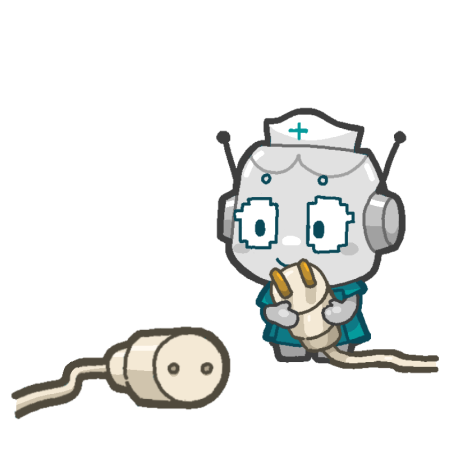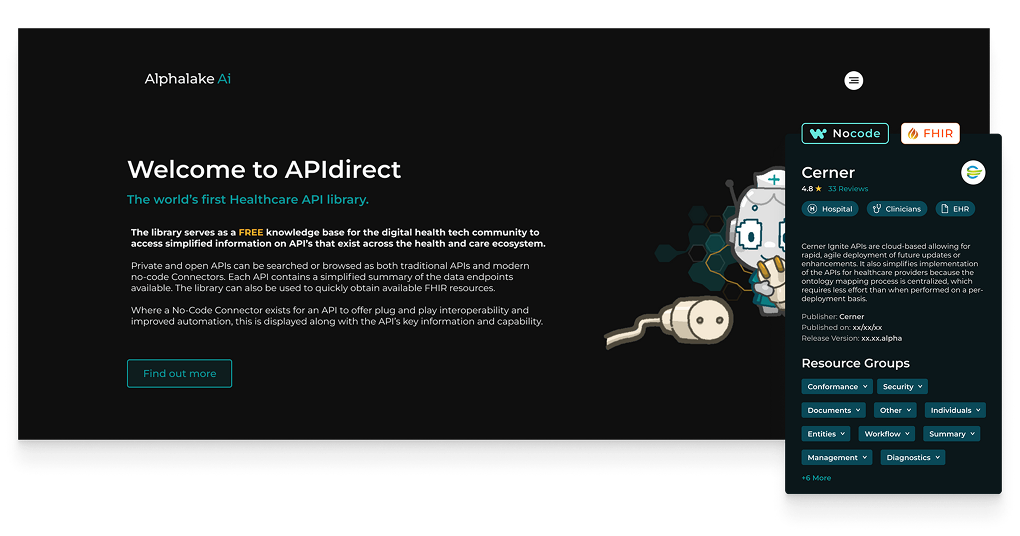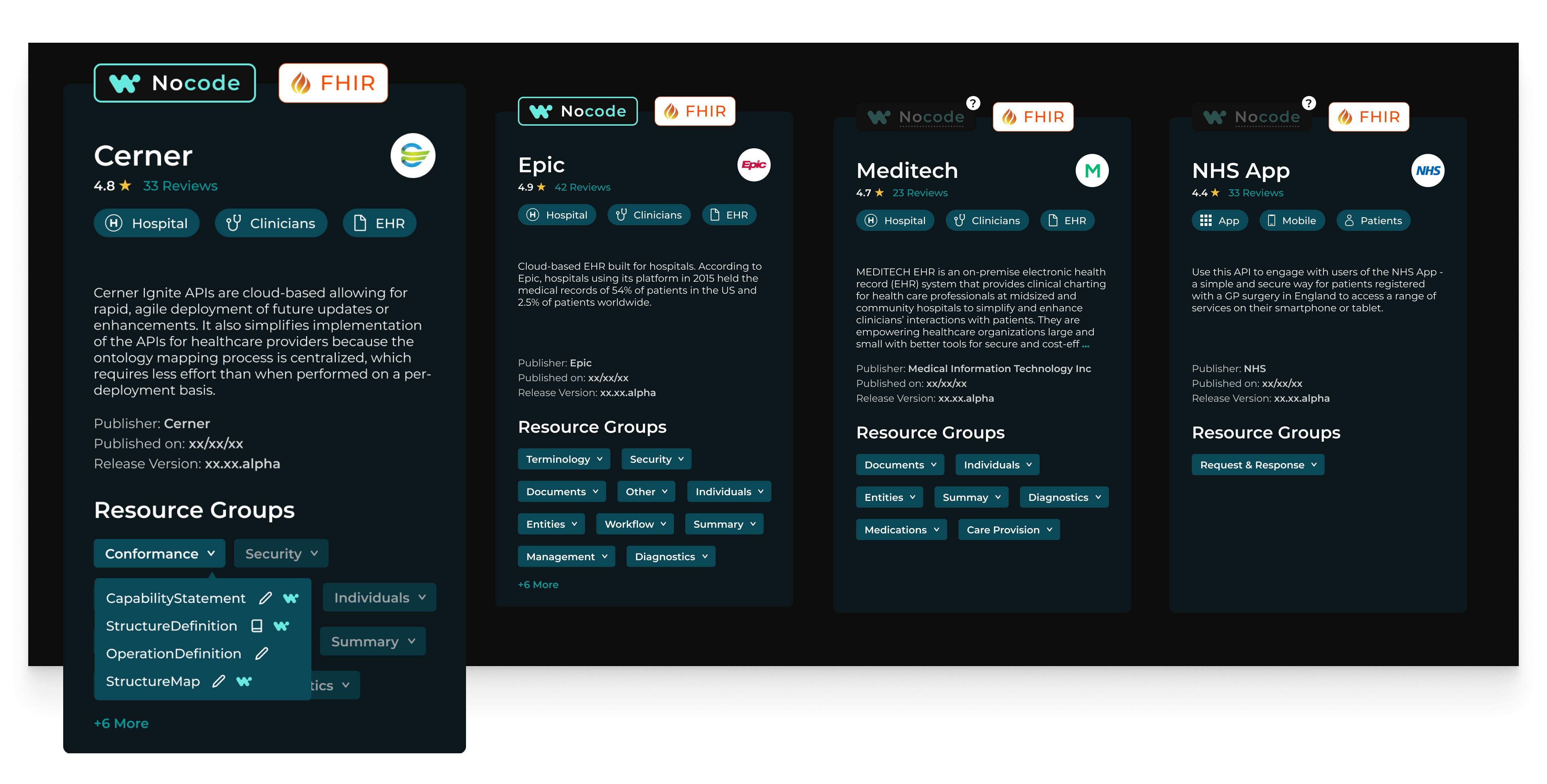


SEAMLESS API ACCESS FOR A SMARTER, FASTER HEALTHCARE ECOSYSTEM


Defining the First UX: Crafted an end-to-end experience enabling clinical teams to explore the world's first healthcare API library

Scalable Taxonomy: Designed metadata and filter systems that grew with the platform, enabling precise discovery across clinical contexts

Alignment With Standardisation: Ensured technical trust and regulatory alignment through structured tagging and architecture

Reducing Integration Time: Streamlined navigation, filters, and schema visibility to support faster implementation

Enabling Platform Growth: Designed a modular upload system that allowed community-driven API expansion without manual outreach

Dual Layer Trust: Expert and community feedback systems for clinical confidence and continuous API improvement
In modern healthcare, integration is everything - but technical fragmentation persists. As more hospitals embrace automation, there was no central hub for discovering, comparing, or onboarding healthcare APIs. This left developers, clinicians, and IT teams struggling to build integrations that could have accelerated patient care.
Alphalake ai envisioned APIdirect as the first global library of healthcare APIs, designed to bridge traditional REST interfaces and modern No-Code automation tools through intuitive UX and FHIR standardisation.

To deliver impact from day one, we prioritised features that solved real integration pain points while laying a foundation for scalable growth. Using a MoSCoW framework, we aligned on:
With no direct competitors, we studied adjacent platforms to uncover shared UX patterns, gaps, and opportunities. Key takeaways included:

Led Research Sessions
With Clinicians & Health IT to shape foundational UX

Created Design Systems
For API Cards, Submission flows & Resource Groups

Strategic Alignment
Balanced MVP constraints with long-term expansion

Designed Architecture
Central to the function of the API Library

Advocated for Clarity
And progressive disclosure across metadata-heavy content
BRINGING STRUCTURE, CLARITY, AND SCALE TO HEALTHCARE INTEGRATION
Each card was engineered to maximize scannability.
Critical decisions included:

Knowing the library would scale rapidly, we built the filter taxonomy early:

The biggest challenge: allowing any healthcare developer to submit new APIs without friction - while capturing enough schema detail to avoid backend bottlenecks
Design choices:
Stakeholders later aligned on expanding this into a community-led forum ecosystem


We refined flows through continuous feedback from clinical and developer stakeholders.
Key takeaways:
APIdirect launched as the first global healthcare API library, with a UX foundation built for trust, scale, and adoption.
This project strengthened my ability to design at the intersection of product strategy and complex healthcare systems, balancing FHIR standards with usability, and building scalable structures that support long-term growth
From accelerating developer integration to enabling 400+ APIs at launch, APIdirect pushed me to think beyond features and into ecosystem-wide outcomes
It remains one of the clearest example of design driving clarity, adoption, and strategic value at scale I've led until today.